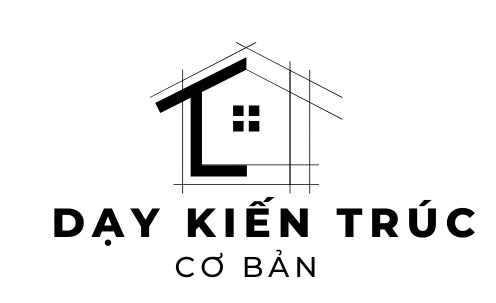In today’s property landscape, property imagery is essential for attracting buyers.
That’s the magic of virtual staging tools.
Instead of paying for physical staging, investors can now CGI-stage empty rooms using AI-based tools.
What Is Virtual Staging Software?
Photo-realistic home furnishing is the art of CGI to furnish photos of bare properties.|It’s a way to let prospects visualize living in a home without moving a single object.}
The process is simple:
- Provide a room image
- Pick a style
- Stage it using 3D assets
- Use it on your listings
Platforms like Stuccco offer AI-enhanced options with design libraries. Some provide automated results, while others let you manually arrange each detail.
Why It Works in 2024
Buyers shop online first — no exceptions.
Virtual staging allows listings to:
- Look professionally designed
- Spark buyer imagination
- Move quicker
- Save thousands on staging costs
When inventory lags, properties with blank rooms don’t cut it. Staged ones? They get offers faster.
Features to Look For in Virtual Staging Tools
When choosing virtual staging software, consider:
- Design variety: Farmhouse to industrial — more choices mean better results.
- High-res output: No one wants cartoonish furniture.
- Simple workflow: You shouldn’t need a PhD in Photoshop.
- Value for money: Look for pay-per-image that fit your needs.
- Drag-and-drop systems: Some tools even allow object removal.
Who Uses Virtual Staging?
Real estate professionals use it for:
- Zillow-ready photos
- Listing previews
- Short-term rental marketing
- Investor pitches
Pros and Cons
✅ Pros:
- Budget-friendly
- Same-day edits
- High visual impact
- No moving hassles
❌ Cons:
- Only exists in photos
- Must label as virtual
- Unrealistic designs risk backfiring
Disclosure Rules & MLS Guidelines
Honesty is key. MLS boards and associations often require:
- Watermarks like “Virtually Staged”
- Text disclosure in photo captions
- Clear communication with buyers that furniture is not included
Trying to trick buyers can backfire.
Future of Virtual Staging
The tech is evolving fast. Expect:
- Auto-design based on image detection
- Interactive tours
- AR and VR integration
The future? Staging a room with just your voice or a tap.
Top 5 Virtual Staging Software Picks
| Software Best For Price | ||
| BoxBrownie | Photo realism | $24/image |
| VisualStager | DIY, drag-and-drop | $15/photo |
| ApplyDesign | Quick auto-staging | $7–$29/photo |
| RoOomy | VR/AR staging | Contact sales |
| Stuccco | Custom pro staging | $29+/image |
Pro Tips for Realistic Results
- Shoot photos in daylight
- Avoid distortion from phone lenses
- Keep it simple
- Create warmth
- Don’t mix styles wildly
Closing Thoughts
Virtual staging has changed the real estate game.
For anyone listing a vacant property, this is your secret weapon.
Modern buyers want visuals — so give them something beautiful.
Source: Hashnode.Dev (top Virtual Staging Software)
Many firms have leveraged AI to transform their sales processes.
{For instance, A top property firm in California implemented AI for dynamic pricing and saw a reduction in time-on-market.
One company used AI to refine its customer outreach, and driving a significant increase in quality leads.
They highlight the transformative impact of integrating AI into every stage of the selling process.
## The Future of AI in Real Estate
The future of real estate is intrinsically linked to further advancements in AI.
We can expect to see even more sophisticated algorithms that enhance every aspect of the sales process.
One emerging trend is combining AI with VR/AR, which transforms the viewing experience into an immersive journey.
Another trend is the convergence of AI and blockchain for enhanced security, which can help mitigate data privacy issues and ensure secure transactions.
Moreover, as AI becomes more intuitive, real estate firms can expect even greater automation and smarter decision-making.
For agents and sellers, embracing AI now ensures long-term growth.
## Conclusion: Embracing the AI Revolution
Artificial intelligence is redefining the real estate selling industry — it is revolutionizing it from the ground up.
Those who invest in AI can capitalize on improved efficiency, better customer engagement, and faster sales cycles.
While challenges such as data privacy, implementation costs, and the need for training persist, the benefits of AI far outweigh these hurdles.
In a world where speed, accuracy, and customer experience are paramount, AI presents a new paradigm in real estate selling.
It’s time for real estate professionals to take the leap and unlock the potential of intelligent tools.
Looking ahead, the fusion of AI with real estate is inevitable to transform the industry for the better.
If you’re in real estate, consider this your invitation to leverage AI and revolutionize your approach.
{In conclusion, AI software is a fundamental shift — it is the core of the future of real estate selling. Embrace the change, harness the power, and watch as your business reaches new heights.
Start exploring AI-driven solutions, integrate these technologies into your operations, and experience the transformative benefits.
